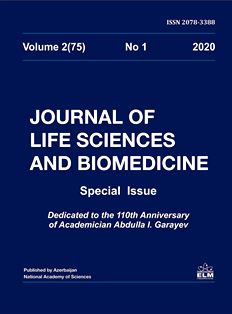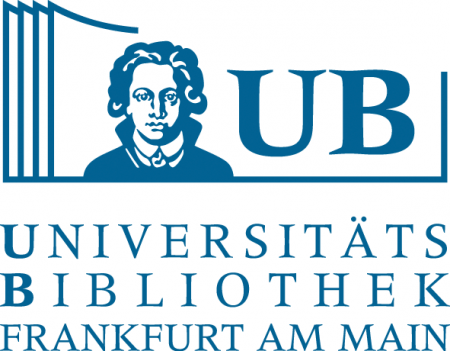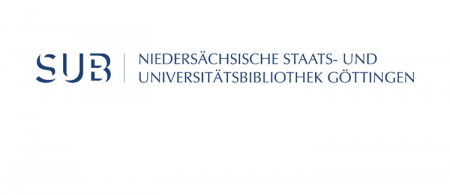
Optimization of culture conditions for higher production of antimicrobial compounds by AZ-130 bacterial strain isolated from soil of Azerbaijan
Research article:Optimization of culture conditions for higher production of antimicrobial compounds by AZ-130 bacterial strain isolated from soil of Azerbaijan
Author: A.G. Aghayeva
Institute of Molecular Biology and Biotechnologies, Azerbaijan National Academy of Sciences, 11 Izzat Nabiyev, Baku AZ1122, Azerbaijan; For correspondence: aytanaghayeva@gmail.com
Accepted for publication: 08 November 2019
Abstract: AZ-130 bacterial strain was isolated from soil sample collected from Azerbaijan in 2014. After pre-liminarily culture and supernatant screenings for novel antibacterial compounds, AZ-130 showed strong gram-positive activity against pathogenic Staphylococcus aureus and Enterococcus faecalis strains. Based on range of its activity, AZ-130 strain that produces AZ-130 antibacterial compound was selected for the further characterization. The main goal of this study is to optimize growth con-ditions for AZ-130 to determine the optimal medium, incubation temperature and time point in which the production of the antimicrobial compound is highest. To achieve this goal, 4 different me-dia types at 4 different temperatures, in total 16 different growth conditions were tested. Superna-tants were collected and clarified at day 1, 2 and 3 or 5. All collected supernatants were analyzed by spot test and broth microdilution method against S.aureus. According to the spot test and broth mic-rodilution results, AZ-130 produces the most antimicrobial compound in TB + 2% Glucose medium at 32°C; incubation time is 2 days.
Keywords: Antimicrobial activity, antibiotics, bioactive molecules, culture conditions, medium optimiza-tion, natural products, primary metabolite, secondary metabolite, pathogenic bacteria
References
Arul Jose P., Sivakala K.K., Jebakumar S.R. (2013) Formulation and statistical optimization of culture medium for improved production of anti-microbial compound by Streptomyces sp. JAJ06. Int. J. Microbiol. 2013: Article ID 526260.
Coyle M.B. et al. (2005) Manual of Antimicrobial Susceptibility Testing. AS for Microbiology.
Demain A.L., Fang A. (2000) The natural functi-ons of secondary metabolites. Adv. Biochem. Eng. Biotechnol., 69: 1-39.
Ekins S., Puhl A.C., Zorn K.M., Lane T.R., Rus-so D.P., Klein J.J, Hickey A.J., Clark A.M. (2019) Exploiting machine learning for end-to-end drug discovery and development. Nature Materials, 18: 435–441.
Gokulan K., Khare S., Cerniglia C. (2014) Pro-duction of secondary metabolites of bacteria. Encyclopedia of Food Microbiology, 2nd Ed. El-sevier, p. 561-569.
Hockett K.L., Baltrus D.A. (2017) Use of the soft-agar overlay technique to screen for bacteri-ally produced inhibitory compounds. J. Vis. Exp., 119: 55064.
Johnning A., Karami N., Tång Hallbäck E. et al. (2018) The resistomes of six carbapenem-resis-tant pathogens - a critical genotype-phenotype analysis. Microbial Genomics, 2018: 4
Jones M.B., Nierman W.C., Shan Y., Frank B.C., Spoering A., Ling L., Peoples A., Zullo A., Lewis K., Nelson K.E. (2017) Reducing the bottleneck in discovery of novel antibiotics. Mic-robial Ecology, 73(3): 658-667.
Lerminiaux N.A., Cameron A.D.S. (2019) Hori-zontal transfer of antibiotic resistance genes in clinical environments. Can. J. Microbiol., 65(1): 34-44.
Otto M. (2013) Community-associated MRSA: what makes them special? Int. J. Med. Microbi-ol., 303(6-7): 324-30.
Singh V., Haque S., Niwas R., Srivastava A., Pa-supuleti M., Tripathi C.K. (2017) Strategies for fermentation medium optimization: An in-depth review. Front. Microbiol., 7: 2087.
Wang Y., Fang X., An F., Wang G., Zhang X. (2011) Improvement of antibiotic activity of Xe-norhabdus bovienii by medium optimization using response surface methodology. Microb. Cell Fact., 14(10): 98.























